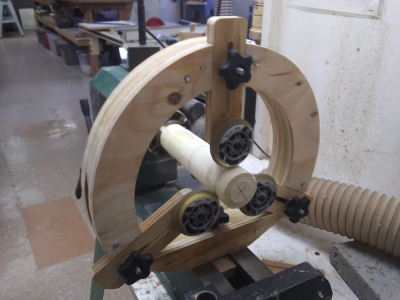- Joined
- Mar 25, 2013
- Messages
- 4,614
I think your idea will work fine. Go for it.One of the plates will have an arbor mounted in it consisting of a ball bearing and another mandrel mounted in the tail stock. The arbor will handle the (rather modest) horizontal loads and of course the face of the chuck will handle the axial loads. The lathe jaws handle the torque. Obviously, the cuts will need to be reasonably light.
I am hoping eventually to be making hundreds of these. It is a case for a battery bank.
R


